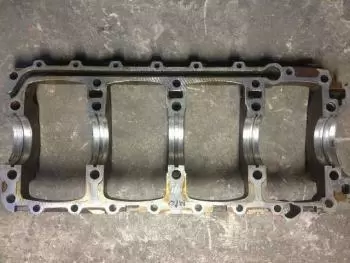
The engine bench is a generally metallic piece that supports the pieces of an electrical or mechanical machine.
In engines, the bench is the element that constitutes the lower part of the engine. The function of the bench is to create a bearing surface for the crankshaft and other moving parts to rest. In addition, it serves as a containment wall for the lubricating oil. It is a very resistant element capable of withstanding the forces generated by the operation of the engine itself.
The shape of a engine bench varies mainly depending on the type of motor. In this article we will describe the bench of an internal combustion heat engine. The description is valid for the diesel engine and the gasoline engine or Otto engine.
What is the bench of a heat engine like?
The forms that a engine bench can take depends mainly on the type of motor to which it is coupled. The main elements that will determine its final shape are the efforts to which it will be subjected, the power and the engine design.
The bench is usually constructed of cast steel. Simplifiedly, it is a piece made up of two double T profiles. The faces of the two profiles end in a machined face. This face needs to be smooth and flat enough to fit perfectly with the columns or racks.
A well called the crankcase is formed between the frames, where the oil that will sustain the upper part of the engine is collected. In addition, the columns will support the upper part of the engine.
These trays that form the crankcase are equipped with large diameter tubes so that the oil can pass freely under its own weight to the lubrication tank located below to be discharged there. Once discharged, the oil is sent back to the lubrication circuit by the oil pump.
The profiles are joined together by transverse partitions. On the cross partitions there are semicircular cracks. The main bearings that serve as housing for the engine crankshaft are placed in these grooves.